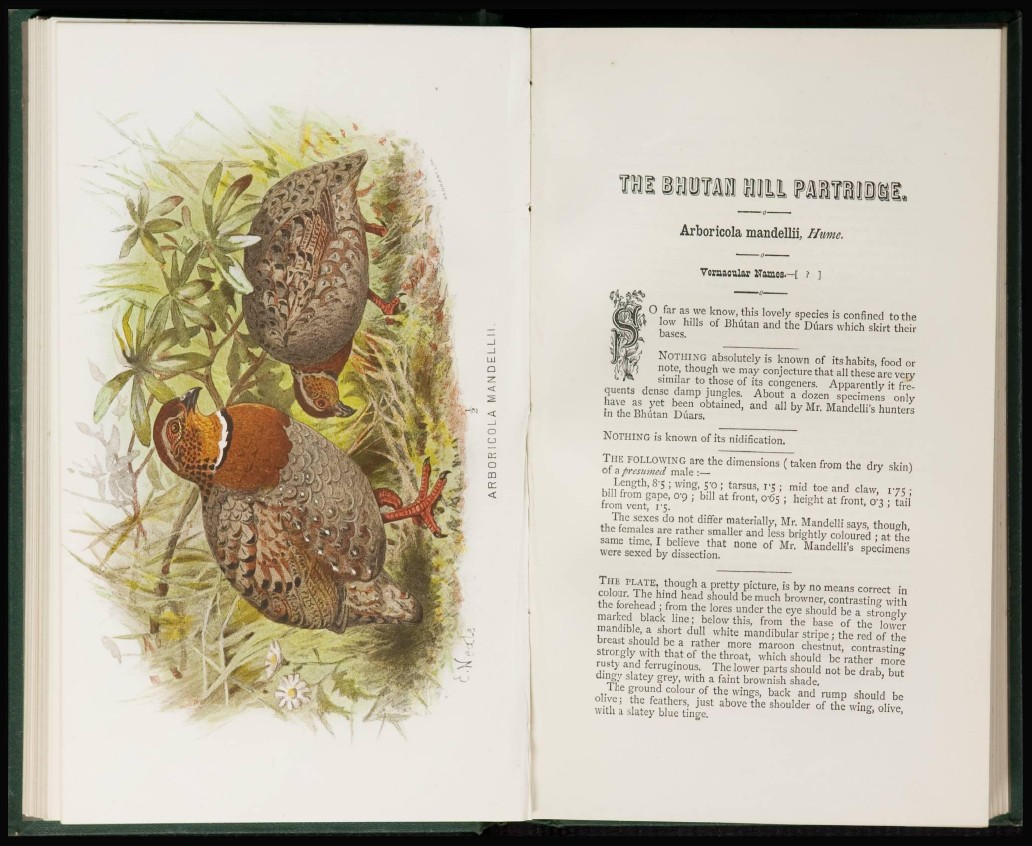
Arboricola mandellii, Hume.
• 0 1
Vernacular Names.—! i ]
I t 0 / 3 1 " VTT k ? ° ^ f . t h i s l o v e ' y s P e c ! e s i s confined to the
P low hills of Bhutan and the Duars which skirt their
if, bases.
NOTHING absolutely is known of its habits, food or
note though we may conjecture that all these are very
similar to those of its congeners. Apparently it irequents
dense damp jungTes? A l ^ d ^ K ^ o S
fe£ ft*""* a"^Mr . M a n d e l l i - s h u n 0 tS
NOTHING is known of its nidification.
T H E FOLLOWING are the dimensions (taken from the dry skin)
of a presumed male :—
Length, 8'5 ; wing, 5'0 ; tarsus, I ' j ; mid toe and claw, 175 ;
bill from gape, 0-9 ; bill at front, 0'6$ ; height at front, 0'3 ; tail
from vent, l -5.
The sexes do not differ materially, Mr. Mandelli says, though,
the females are rather smaller and less brightly coloured ; at the
same time, I believe that none of Mr. Mandelli's specimens
were sexed by dissection.
T H E PLATE, though a pretty picture, is by no means correct in
colour. The hind head should be much browner, contrasting with
the forehead ; from the lores under the eye should be a strongly
marked black line; below this, from the base of the lower
mandible, a short dull white mandibular stripe; the red of the
breast should be a rather more maroon chestnut, contrasting
strongly with that of the throat, which should be rather more
rusty and ferruginous. The lower parts should not be drab, but
dingy slatey grey, with a faint brownish shade.
The ground colour of the wings, back and rump should be
olive ; the feathers, just above the shoulder of the wing, olive,
with a slatey blue tinge.